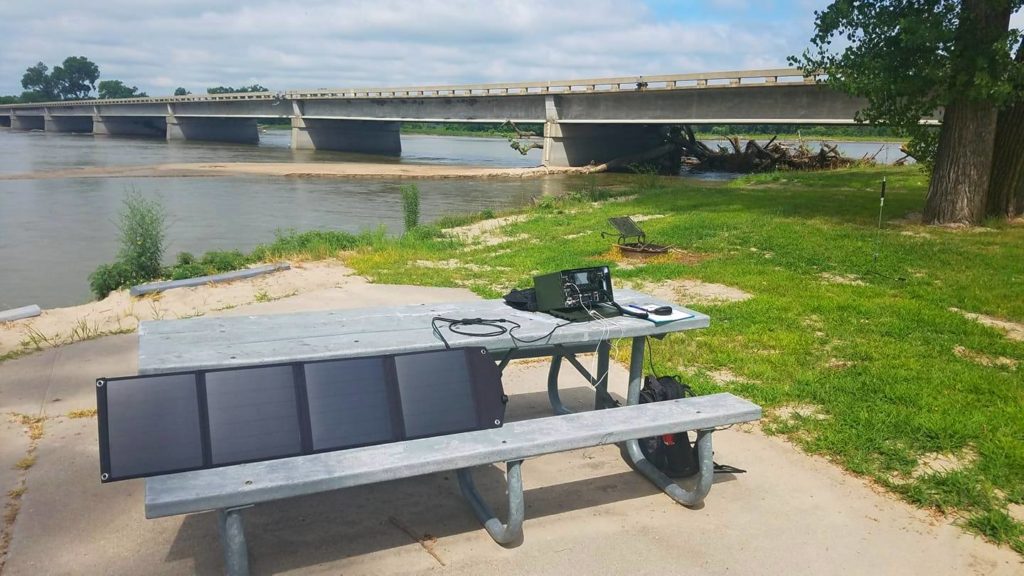This summer I enjoyed a series of outings to several national and state parks with my new portable radio station. Briefly – it is an Icom IC-7100 mounted in the Commander power system from Hardened Power Systems. The signal is fed into the Super Antenna MP1DXR. I am planning to publish a full review of this setup in the end of the season.

In late June, as part of my Parks on the Air activities, I went on a rove to activate four parks in eastern Nebraska, not too far from my home. Beside that being the hottest day of the month with the temperature topping 98F and heat index reaching 110F (but hey – I planned that weeks ahead, so didn’t want to cancel!), it was a good test of my equipment, and I had a lot of fun making over a hundred contacts with radio amateurs all across the US and Canada.
Here I would like to share a few thoughts and my latest experiences on a hot topic in field communications – powering radios with batteries and solar power. During that particular day, I worked approximately 3.5-4 hours total, at full power (100 W), and at quite demanding regime with at least 50% of time key down (meaning that I was transmitting a lot, not primarily listening). Based on the battery meter, the average power consumption at this “pace” turned out to be approximately 8 Ah – thus, the 22 Ah battery of my Commander alone should be able to support operations for at least 2-2.5 hours (it was actually verified in practice when I activated Merritt Reservoir SRA earlier in June and had no sun). On the other hand, with full sun during this four-park outing (which I was ready to regret about given the extreme heat), my observations showed that I used almost no battery at all: I left home with 13.31 V on the power meter, and came back home with 13.17 V. With the consumption of ~50 W it is fairly reasonable since my solar panel is 60 W. However, it is still important to have the battery as a “buffer” for peak draw, which at 100 W transmission reaches ~130 W according to the Commander’s meter (also in line with ~12 A peak draw on transmission being a norm for a 100 W rig).

Thus, it is realistic to run a portable radio station for extended periods of time with no access to house power. This was, again, verified during my June tent camping trip, where I left with full battery and worked a total of ~6 hrs, only running out of power at the last park as it was overcast and I had to rely entirely on the battery.
UPD Dec 2019: During my recent activation of K-2614, I worked for 2 hours without the solar panel attached – and it was still more than plenty. The battery meter indicated the overall consumption of 7.3 Ah – somewhat less than estimated above. I think that there are at least two factors contributing to this variation: (1) the summer activations were at almost 100F, and the radio’s fan was working non-stop – whereas the December activation was at 45-50F, thus no active cooling needed; and (2) the first hour of December activation was relatively slow, and the “key-down” time was most probably less than 50%.